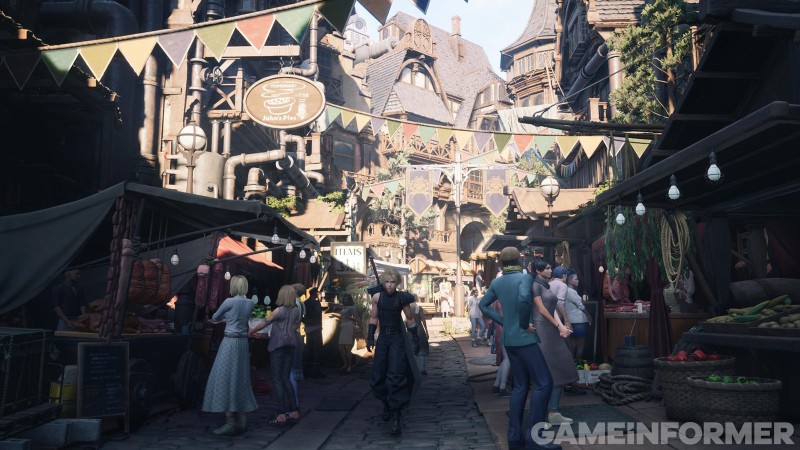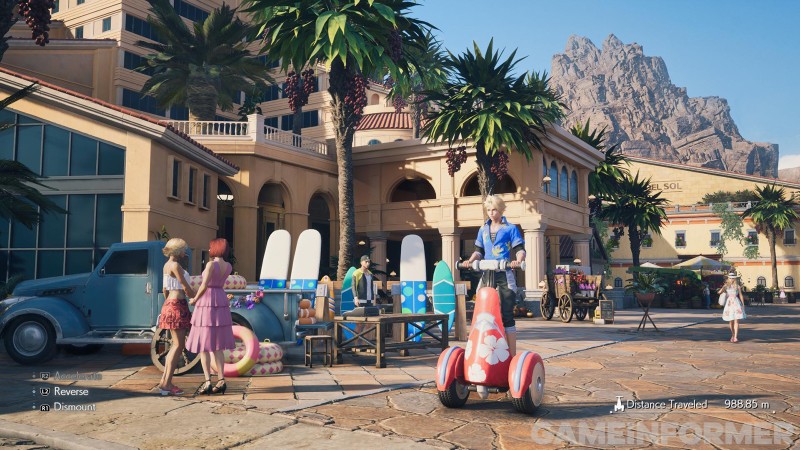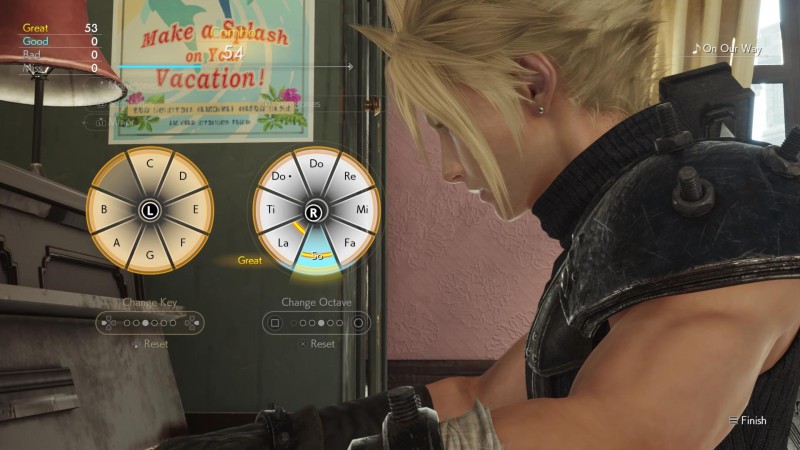Final Fantasy VII Remake set the tone for what players could expect from this three-part retelling of the beloved 1997 Square RPG. The excellent updates to the combat system, the fantastic expansions on character relationships, and the stellar production values told us Square Enix is not taking the responsibility of remaking one of its most iconic games lightly. However, Final Fantasy VII Rebirth looks to take several components of the experience to the next level, largely thanks to its emphasis on side content.
Following the events in Midgar, as depicted in Remake, the party emerges into a vast, open area. In the original game, this was depicted through an overworld map, but in Final Fantasy VII Rebirth, players remain in the same perspective as the rest of the game as they move from one point of interest to another. After the more restrictive approach to Final Fantasy VII Remake, the new sense of openness is refreshing, and something the team was deliberate in integrating, particularly when you consider how much more open this segment is during the original title.
“Seeing that Remake is set in the world of Midgar, in which the player can explore within that area, we leaned heavily on story elements and were focused on a more narrative-driven game for Remake,” director Naoki Hamaguchi says. “Now that we’re entering into the outside world and going forward in that direction, I have this desire to depict more of that feeling of exploration, and I very much feel that this was able to be accomplished for Rebirth.”
While you’re exploring, you should plan on having the opportunity to enjoy a ton of side content. Hamaguchi estimates that approximately 80 percent of Rebirth’s exploration-based content is side content, while the mainline story makes up the remaining 20 percent. If that makes you worry that Rebirth lacks story content, Hamaguchi says you can relax; even simply focusing on the main storyline, he estimates it will give players around 40 hours of gameplay. Meanwhile, if you tackle a decent amount of side content, players can expect to spend around 60 hours in Rebirth, while the most dedicated sidequesters can look forward to upwards of 100 hours of content.
But it’s not content bloat for the sake of inflating those playtime hours. The developer also wanted to ensure it delivered a diverse and meaningful experience to players. “When looking at these larger titles in which there is a more expansive world that has these large amounts of side content, some players may feel these have a large quantity of side content, but perhaps the actual experience is not as varied,” co-director Motomu Toriyama says. “For Rebirth, we took care of having this select number of side content, which we truly worked to develop in depth. This was a large consideration for us, allowing players to experience various forms of gameplay through the side content. In that way, I believe we were able to achieve a distinctive flavor among similar titles.”
When I ask Hamaguchi for his favorite RPG outside of the Final Fantasy series, without hesitation, he names The Witcher 3: Wild Hunt, CD Projekt Red’s 2015 masterpiece that many consider one of the greatest games of all time. That title is known for its meaningful side content, which is so strong that its storylines even match those of the main story.

“Regarding titles like The Witcher 3, which has that open-world role-playing type element, we did some extensive research into these types of titles and looked at it as a baseline in which Rebirth should be a type of title that can stand alongside it and have the type of content that would be satisfying to its players,” Toriyama says.
Those who played Final Fantasy VII Remake will recognize one of the prominent sidequest givers: Chadley. The younger researcher once again wants your help learning about Materia, and he’ll reward you with additional summons. As you move through the world, he asks you to look into certain happenings through events called World Intel.
The rewards sound worth it, but from everything I hear from the developers, the story may be the driving force behind pushing players to sidequests. To make side content more meaningful, Square Enix expanded the affinity system. This under-the-hood mechanic takes your actions towards a character and translates them into how certain scenes – such as the famed gondola date sequence – play out. Final Fantasy VII Rebirth’s side content is a critical driver for this mechanic, with each sidequest bringing in a secondary protagonist from the party. Completing a sidequest improves Cloud’s affinity with the given character (to learn more about the sidequest I saw, head here).

“We wanted to give players the freedom of choice in deciding whether they wanted to dedicate themselves solely to the main storyline and, like, no sidequests at all,” Hamaguchi says. “Or there might be people who want to delve into the side content and go really in-depth into the character relationships and understand the story deeper, or just the balance of those two. We wanted to give that freedom.”
The original Final Fantasy VII features a ton of minigames – particularly during its middle section – and Rebirth is no different. One of the most involved and continuous minigames is Queen’s Blood, a competitive card game you can play against NPCs in Rebirth.
While the team remains tight-lipped about the exact mechanics, we know it is a strategic card battler with collectible and deck-building elements. “In terms of the number of cards, there is a massive amount – enough to be, like, its own card game almost,” Toriyama says. “Part of the fun will be collecting these cards. Queen’s Blood is more of a strategy-and-thinking kind of card game, but I took a look at some of the gameplay when you are toward the end, and you have collected all of the cards, and it has the potential to become a very flashy, fast-paced card game; it almost has the instant-ness of a shooting game in which your opponent may put down a card, then you will instantly put down a card while putting down another. It’s very fast. Of course, this is on the maximum difficulty level of the card game, so I believe there are only going to be a few players that play at this intensity level.”

The other minigame I got a look at is a piano activity. Through exploration, Cloud can find sheet music for compositions within the world. He can then sit at the piano and play the songs using the two analog sticks and some buttons. The piano minigame also features a freeplay mode, which allows you to perform any song you want. I watched a developer play a famous Japanese song using the in-game piano mechanics. It looks like it’ll take a lot of practice to get that good, but the mechanics seem deep, and the team wants players to embrace the ability to play any song they like and share their performances online.
I didn’t get a look at the chocobo racing, but the team touts its improvements and modernizations to be more in line with what players expect from a modern form; players can equip their chocobos with stat-boosting gear, and the different types of chocobos perform differently. Toriyama tells me the Rebirth team even briefly considered collaborating with the developers of 2022 kart-racer Chocobo GP for the minigame but eventually decided to go its own route. With Gold Saucer and Fort Condor still yet to be discussed in-depth, I can only imagine the minigames waiting for players when they venture to those areas.
Final Fantasy VII Rebirth arrives on PlayStation 5 on February 29. For more on the game that took home “Most Anticipated” at this year’s The Game Awards, click the banner below to visit our exclusive coverage hub!
Parts of this article originally appeared in Issue 362 of Game Informer.
